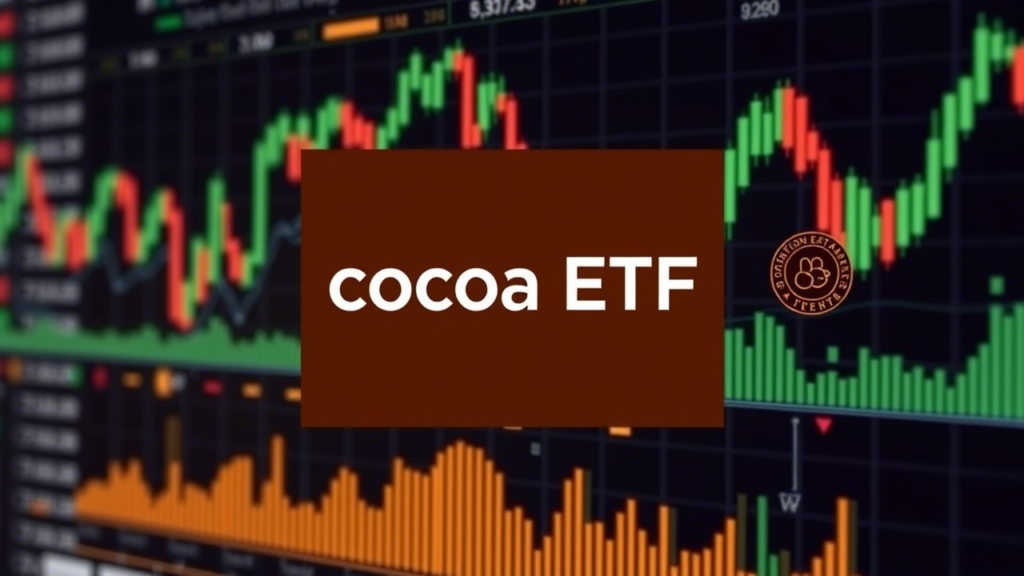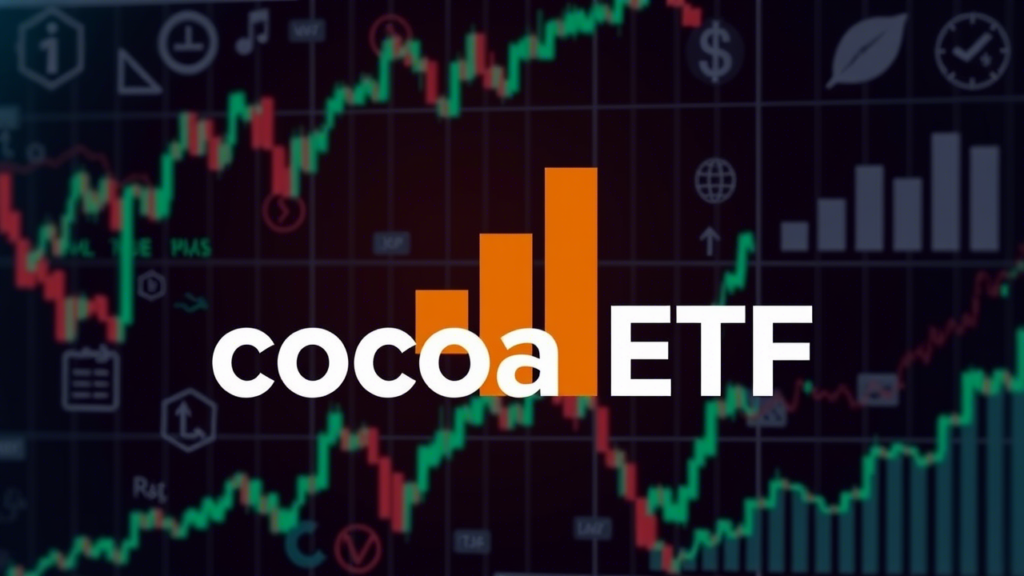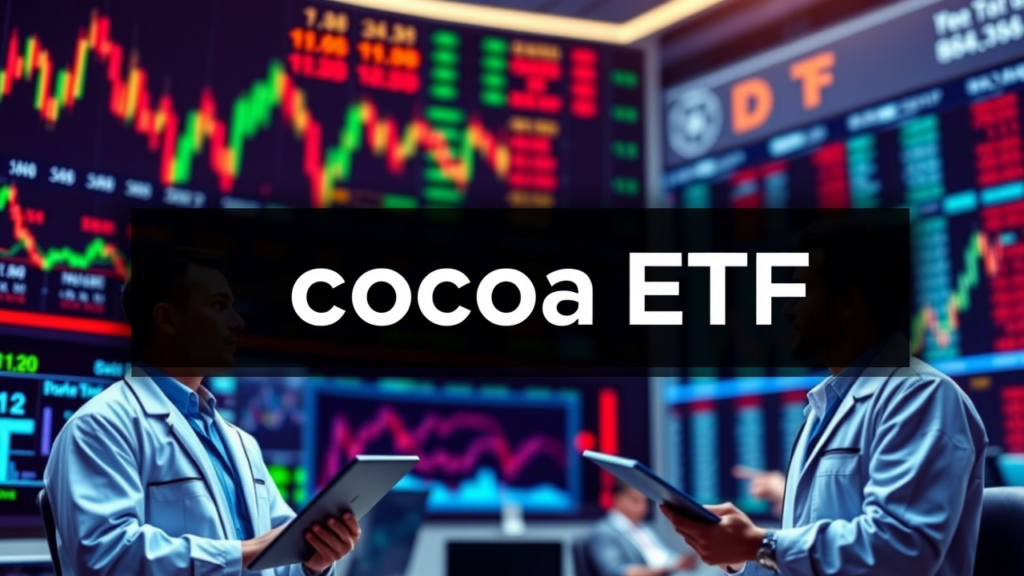When it comes to investing, diversification is key. Commodities have gained significant attention among the many investment options available, and one such unique asset class is cocoa. Cocoa ETF is an excellent way for investors to gain exposure to this essential commodity without dealing with physical storage or trading complexities. But is investing in a Cocoa ETF the right decision for you? Let’s dive into the details to explore its advantages, risks, and potential future growth.
What is a Cocoa ETF?
A Cocoa ETF is an exchange-traded fund that invests in futures contracts and tracks cocoa’s price movements. Unlike traditional stock investments, these ETFs provide exposure to fluctuations in cocoa prices, allowing investors to speculate on the commodity’s value without owning actual cocoa beans. They trade on stock exchanges like regular shares, making them accessible and easy to buy or sell.
How Does a Cocoa ETF Work?
A Cocoa ETF functions similarly to other commodity-based ETFs. Instead of holding physical cocoa, it tracks futures contracts, typically linked to a commodity index like the Bloomberg Cocoa Subindex. As cocoa prices fluctuate due to supply and demand, geopolitical factors, and economic conditions, the value of the Cocoa ETF moves accordingly.
Fund providers usually manage these ETFs. They continuously adjust their holdings based on market conditions, ensuring the fund remains aligned with cocoa price movements.

Why Invest in a Cocoa ETF?
Investing in a Cocoa ETF can be beneficial for several reasons. Here are some of the key advantages:
Commodity Exposure Without Physical Ownership
Investors can participate in the cocoa market without needing physical storage or dealing with logistical challenges associated with trading cocoa beans.
Portfolio Diversification
Cocoa prices do not always move in sync with stocks or bonds. Adding a Cocoa ETF to an investment portfolio can enhance diversification and reduce overall risk.
Inflation Hedge
Historically, commodities, including cocoa, have acted as hedges against inflation. When inflation rises, commodity prices increase, potentially protecting investors from currency depreciation.
Capitalizing on Cocoa Price Movements
Cocoa prices fluctuate due to various factors, such as weather patterns, geopolitical tensions, and changes in global demand. Investors who anticipate price movements can benefit from short-term gains.
Popular Cocoa ETFs
Several ETFs specialize in tracking cocoa prices. One of the most well-known options is:
WisdomTree Cocoa ETF (COCO)
This Cocoa ETF tracks the Bloomberg Cocoa Subindex, providing exposure to cocoa futures contracts. It is a popular choice among investors looking to enter the cocoa market through ETFs.

Factors Influencing Cocoa Prices
The price of cocoa is affected by various factors, making Cocoa ETFs highly dynamic investments. Here are the primary factors impacting cocoa prices:
Supply and Demand Dynamics
The global cocoa supply depends on key producing countries such as Ivory Coast, Ghana, and Indonesia. Any disruption in production, such as adverse weather conditions or political instability, can impact supply and drive up prices.
Weather Conditions
Cocoa trees are susceptible to climatic changes. Extreme weather events such as droughts, excessive rainfall, or storms can affect crop yields and influence cocoa prices.
Global Demand Trends
The chocolate industry largely drives the demand for cocoa. However, changes in consumer preferences, health trends, and economic conditions can affect the amount of cocoa consumed worldwide.
Currency Fluctuations
Since cocoa is primarily traded in US dollars, fluctuations in currency exchange rates impact prices. A weaker dollar typically makes commodities more affordable for international buyers, leading to increased demand and higher prices.
Speculation and Market Sentiment
Like any other traded asset, cocoa prices are influenced by speculative activities. Investors and hedge funds actively trade cocoa futures, leading to price fluctuations based on market sentiment.
Risks of Investing in a Cocoa ETF
While there are several advantages to investing in a Cocoa ETF, it is essential to consider the risks involved:
High Volatility
Due to unpredictable weather conditions and political instability, Cocoa prices can be extremely volatile, leading to sudden price fluctuations in a Cocoa ETF.
Market Risk
Commodity markets can be unpredictable, and external factors like trade policies, economic downturns, or new regulations can impact cocoa prices.
Contango Effect
Since Cocoa ETFs invest in futures contracts, they are subject to the contango effect, where futures prices are higher than the current spot price. If futures contracts consistently roll over at a premium, this can lead to lower returns over time.
Limited Long-Term Growth
Unlike equities, which benefit from company earnings and expansion, cocoa does not generate intrinsic value. Therefore, investors must consider their investment horizon before allocating significant funds to a Cocoa ETF.
Who Should Invest in a Cocoa ETF?
Investing in a Cocoa ETF is suitable for individuals who:
- Seek commodity exposure without direct ownership.
- Want to diversify their investment portfolio?
- Are comfortable with market volatility.
- Have a short-to-medium-term investment horizon.
It may not be the best choice for risk-averse investors or those looking for long-term wealth accumulation.
How to Invest in a Cocoa ETF
Investing in a Cocoa ETF is simple and can be done through various platforms:
Online Brokerage Accounts
Most stock brokerage platforms, such as E-Trade, Charles Schwab, or Fidelity, offer access to Cocoa ETFs. Investors can purchase shares just like stocks.
Financial Advisory Services
Financial advisors can help investors understand the risks and rewards of Cocoa ETFs and allocate appropriate funds based on financial goals.
ETF Provider Websites
Checking the official websites of ETF providers, such as WisdomTree, gives insights into fund performance, expense ratios, and holdings.

Also Read: Who is Lyzel Williams?
Last Review
A Cocoa ETF can be a valuable addition to an investor’s portfolio, providing exposure to the cocoa market without direct ownership. It offers diversification, potential inflation hedging, and an opportunity to capitalize on commodity price movements. However, it comes with risks such as volatility, market fluctuations, and potential contango effects.
Assessing individual financial goals, risk tolerance, and market knowledge is crucial before investing. While Cocoa ETFs can provide exciting opportunities, a well-balanced approach, and proper risk management are essential for making informed investment decisions.
Would you consider adding a Cocoa ETF to your portfolio? With careful planning and market analysis, it could be a rewarding investment for those willing to navigate the complexities of the commodity market.































Comments 1